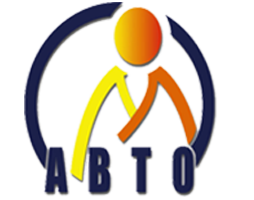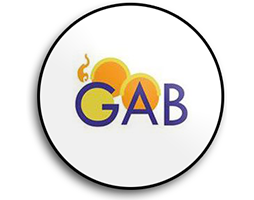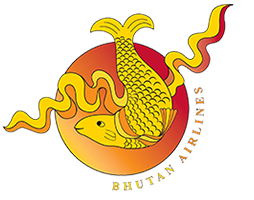



Getting Into Bhutan:-The Kingdom of Bhutan remained largely cut off from the rest of the world up until the early 1960’s. Entering the country was difficult as it was only accessible by foot from two main entry points, one in the North and another from the South. The Northern route was through Tibet, crossing high mountain passes that were inaccessible throughout the winters.The second entry route from the South came through the plains of Assam and West Bengal. The high frozen passes in the North and the dense jungles in the South made it extremely difficult to enter the country.
However, carefully planned economic development has made the country much more accessible and there are now a network of roads entering and traversing the country, as well as one international and multiple domestic airports.
Today the main roads entering the country are through Phuentsholing in the south, linking Bhutan with the Indian plains of West Bengal through the border towns of Gelephu, in the central region and Samdrup Jongkhar in the east, that link Bhutan with the Indian state of Assam.
Travel By Land:-Phuentsholing, Gelephu and Samdrup Jongkhar are the only land border areas open to tourists.
The town of Phuentsholing in south-west is located approximately 170 km east of the Indian national airport at Bagdogra. After crossing Phuentsholing, you begin your journey to Thimphu, the capital city with travel time of about six hours for the 170 km stretch.
Gelephu, in south-central Bhutan, is another entry point to Bhutan. It is approximately 250 kms from Thimphu and the journey will take you through the sub-tropical areas of Bhutan before entering the alpine zone and then finally into Thimphu. One will have to traverse across three districts and the travel time will be about ten hours.
The district of Samdrup Jongkhar in south-east Bhutan borders the Indian district of Darranga, Assam and is approximately 150 kms away from Guwahati, the capital city of Assam. The journey from Guwahati is about three hours. Tourists entering Bhutan through Samdrup Jongkhar will take you to Trashigang, and from there over the lateral route to Mongar, Bumthang, Trongsa, Wangdue Phodrang and then finally into the capital, Thimphu. The distance is about 700 kms and will take you a minimum of three days to reach Thimphu.
Travel By Air:-There are flights to destinations that include Bangkok, Delhi, Kolkata, Bagdogra, Bodh Gaya, Dhaka, Kathmandu, Guwahati, Singapore and Mumbai.
Paro is situated at a height of 2,225 m (7300 ft) above sea level and is surrounded by mountains as high as 4,876 m (16,000 ft). At present two carriers operate to Bhutan, Drukair and Bhutan Airlines. There are also domestic airports in Yonphula in eastern Bhutan, Bumthang in central Bhutan, and Gelephu in south-central Bhutan.
Flying into Bhutan’s Paro International Aiport is typically an exciting experience as the descent into Paro valley brings you closer to the mountain tops than most other flights in the world. The flight between Paro and Kathmandu is one of the most exciting ones as the aircraft passes over four of the five highest mountains in the world. In fine weather, as you soar higher up, you can enjoy the spectacular view of Mt. Everest, Lhotse, Makalu and Kangchenjunga at their best.
Visa/Entry Permit:-With the exception of visitors from India, Bangladesh and Maldives, all other visitors travelling to Bhutan need a visa.
Indian, Bangladeshis and Maldivian nationals can obtain a permit at the port of entry on producing a valid passport with a minimum of 6 months validity (Indian nationals may also use their Voters Identity Card (VIC)).
All other tourists must obtain a visa clearance prior the travel to Bhutan. Visas are processed through an online system by your licensed Bhutanese tour operator directly or through a foreign travel agent.
You are required to send the photo-page of your passport to your tour operator who will then apply for your visa. The visa will be processed by the Tourism Council of Bhutan (TCB) once the full payment of your holiday (including a USD $40 visa fee) has been wire transferred and received in the TCB bank account. Once received, the visa clearance will be processed within 72 working hours.
At your point of entry you will be required to show your visa clearance letter, the visa will then be stamped into your passport.
Online Regional Permit System:-In order to streamline and facilitate smooth visitation by tourists from Bangladesh, India and Maldives, the Department of Immigration, Ministry of Home and Cultural Affairs and the Tourism Council of Bhutan have launched the Online Permit System. The system facilitates the online processing of permits for regional tourists through registered Bhutanese tour operators and TCB certified hotels. The facility is offered as an optional channel to process permits for visitors from the region and is applicable for entry from Paro and Phuntsholing. Visitors who use this facility will be able to obtain their permit clearances and route permits ahead of their arrival in Bhutan similar to international tourists.
Accommodation:-A wide variety of accommodation is available ranging from luxurious 5-star hotels to cozy little hotels and homestays in traditional Bhutanese homes and settings. Visitors can be assured of their warmth and comfort of the hotels. Similarly, the ambiance and hospitality offered by the hotels are incredible.
1. Hotels
2. Resorts
3. Farm-stays
4. Home-stays
Additionally visitors embarking on long treks will be provided with tents and whatever other camping equipment is deemed necessary. Regardless of where they stay, visitors can be assured of their comfort and traditional Bhutanese hospitality.
Hotels:- Bhutan has hundreds of hotels located all across the country. They range from small, simple and clean local hotels to luxurious resorts for affluent travelers seeking the ultimate getaway.Hotels in Bhutan are rated according to a National 5 Star rating System. All Tour Operators are required to provide their guests with a minimum of 3 Star accommodations so you can be assured of your comfort. Most hotels provide their guests with Television, Room Service, Fitness Centers, Spas and Wi-fi. However the exact services available will vary from hotel to hotel.
Guest House:- There are various Guesthouses located around the Bhutan. They are graded on the same scale as hotels. The exact services available can vary among Guesthouses.
Farm Stay Visitors also have the option of spending a night in a traditional Bhutanese Farm House. Agriculture is still one of the major sources of livelihood amongst the Bhutanese people and a Farm-Stay will give you an excellent glimpse into the day-to-day life of a typical Bhutanese family.
You’ll be able to observe age old Bhutanese farming traditions as the family goes about its daily tasks. You’ll enjoy delicious home-cooked meals and the unparalleled hospitality of a Bhutanese host.
All officially sanctioned and listed Farm-stays are located in the gorgeous Bhutanese countryside amidst lush farmland far from the noise and crowds of population centers. In order to experience a traditional life, electricity and running water are not available at Farm- Stays. Hot water can be provided by the family but will be served in a wash basin/bowl.
Home Stay:- Visitors have the option of spending a night in the traditional home of a Bhutanese family. A Home-Stay will give you an excellent glimpse into the day-to-day life of a typical Bhutanese family.
All officially sanctioned and listed home-stays are located in the gorgeous Bhutanese countryside, far from the noise and crowds of population centers. In order to experience a traditional life, electricity and running water are not available at Home-Stays. Hot water can be provided by the family but will be served in a wash basin/bowl.
Travel Tips Checklist:- The following information acts as a guide when traveling to Bhutan. This practical advice is not a comprehensive list but should provide some useful information for you as you plan your travelling.
Travel / Medical Insurance:- The Royal Insurance Corporation of Bhutan has initiated a travel and medical plan solely for our visitors. Travel insurance can be provided through your Bhutanese tour operator or international partner. You may also visit the Royal Insurance Corporation of Bhutan website at www.ricb.com.bt for more information.
Money:- Bhutan’s currency is the Ngultrum (Nu.) It is at par with the Indian rupee which is widely accepted in the country.
In addition, POS (Point of Sale) services are available nationwide, meaning visitors can pay by credit card at most hotels and handicrafts stores.
Banking:- Financial institutions in Bhutan have been greatly enhanced and today we have a number of banks that cater to the needs of the people.
Some of the banks that you can avail of while in Bhutan are the Bank of Bhutan Limited, the Bhutan National Bank, the Druk PNB and the Tashi Bank. Traveller’s cheque can be easily withdrawn and exchanged for local currency. Many of these banks provide internet banking facilities.
Eletricity:- All major towns are well connected with electricity that runs on 220/240 volts with round hole two-pin and three-pin power outlets.
It is recommended that you bring flat-to-round pin converters for your electronics if necessary, however, most hotels offer multi plug sockets. Bhutan is a carbon neutral destination. Our energy is clean and green generated by hydro power.
Photography:- Bhutan offers immense opportunities for photography especially during outdoor sightseeing trips.
However you should check with your guide before taking pictures or filming inside Dzongs, temples, monasteries and religious institutions as in some area photograph/filming is not permitted.
You are free to capture images of the landscape, the panoramic views of the mountain ranges, rural life, flora and fauna, distinctive Bhutanese architecture and the exterior of Dzongs and Chortens.
Shopping:- Some popular handicraft items available for purchase are hand-woven textiles of raw silk or silk, carved masks of various animals, woven baskets of cane and bamboo, wooden bowls known as Dapas, handmade paper products or finely crafted gods of silver. Other items you may be interested in are the exquisite Buddhist thangkha paintings or Bhutan’s wide array of colourful and creative postage stamps. You can come across these items in the many handicraft shops in and around Thimphu and in other major towns. Please remember that buying and selling of antiques is strictly forbidden in Bhutan.
Gratuities:- Tipping is a purely personal matter. We leave it up to you as to whether you want to give a gratuity to your guides and drivers. However, if doing so, we recommend that you place the gratuity in an envelope.
Communications:- The country has a good network of telecommunication facilities. Most hotels and cafe’s offer Wi-Fi internet access. Bhutan has a comprehensive mobile (cell) phone network with global roaming also assessable.
Clothes and Other Paraphernalia:- With great altitudinal variations, weather is quite mixed in Bhutan. So be prepared to face the unforeseen weather conditions.
We expect visitors to dress modestly and respectfully especially if you are planning a visit to the monasteries, Dzongs and other religious institutions. Long pants and long sleeved tops should be worn when visiting such places. As a mark of respect, be kind enough to remove your hats, caps etc. as you enter religious and administrative premises, institutions and in any other place that you come across with the national flag being raised.
Measures, Weight and Time:- Bhutan ascribes to the metric system and most weights are measured in gram (g) and kilogram (kg). The standard time is 6 hours ahead of GMT.
Health Inoculations:- Before embarking on a trip to Bhutan, please seek advice from your doctor with regard to vaccinations and appropriate medication you should have prior to your travels. As a minimum you should have tetanus, typhoid and hepatitis A inoculations.
Precautions Bhutan is one of the safest countries in the world however you should still exercise caution when visiting. Please ensure that your belongings especially your passports, cameras, wallets and purses are properly secured. Please refrain from leaving such items within sight or in locked vehicles while sightseeing.
Avoid drinking tap water which has not been boiled or ice cubes in drinks at all times as most water sources in Bhutan are untreated. One can easily acquire affordable treated and bottled water.
Also, Bhutan has a duty to protect its citizens from drugs and tobacco products. To do this we need your help and cooperation. Please co-operate if stopped and asked about your baggage. Please do not carry tobacco goods in excess of the set limit. For more information please see following link. Tobacco Control Act
Public Holidays:- Public holidays are observed throughout the nation. However, each Dzongkhag has its own list of regional holidays that are observed especially during the annual Tshechus (Religious festivals). For such a list, please contact your service provider or travel agent.
Minimum Daily Package Rate:- The Royal Government of Bhutan sets minimum selling prices for packages to Bhutan. These must be paid in US dollars prior to arrival in Bhutan.
The minimum daily package applicable per tourist per night halt in Bhutan for tourists travelling in a group of 3 people or more is as follows:
• USD $200 per person per night for the months of January, February, June, July, August, and December.
• USD $250 per person per night for the months of March, April, May, September, October, and November.
• A minimum of 3 star accommodation (4 and 5 star may require an premium payment).
• All meals
• A licensed Bhutanese tour guide for the extent of your stay
• All internal ground transport
• Camping equipment and haulage for trekking tours
• USD 65 Sustainable Development Fee (SDF)
(The list of hotels and lodges approved to provide accommodations are all listed on this website. If your accommodation is not listed on this website then it is not licensed cater for international tourists)
Surcharges Tourists travelling in a group of two (2) persons or less shall be subject to a surcharge, in addition to the minimum daily package rates. These are as follows;
• Single individual – US$ 40 per night
• Group of 2 persons only – US$ 30 per person per night
The surcharge will not be applicable to representatives of foreign travel agents on business study or promotional visit duly approved and cleared by TCB.
Discounts:- i. There shall be no charge other than visa fee of USD 40 for children below the age of 5 years.
ii. Children between the ages of 5-12 years shall be given 50% discount on minimum daily package rate.
iii. Full time students below the age of 25 years, holding valid identity cards from their academic institutions, shall be given 25% discount on minimum daily package rate.
iv. A group size discount of 50% on minimum daily package shall be given to one person in a group of 11 people. 100% discount shall be given to one member in a group exceeding 16 people.
v. A 50% duration discount on SDF shall be provided after the 8th night and 100% discount on SDF shall be provided after 14th night.
vi. 100% discount shall be provided on SDF on first and/or last night for groups with night halt in Phuntsholing, Sarpang and Samdrup Jongkhar on arrival and/or departure.
Note: Children below 5 years will not be eligible for discounts (iv), (v), (vi).
All Children and Students will not be eligible for discount (v).Delayed Arrivals:- There is no charge for delays in arrival and departure because of weather conditions disrupting flights or road blocks. The tourist must however bear the cost of food, accommodation, transportation, and other services required. It is highly recommended that you purchase travel insurance prior to travel.
Cancellations:- Individual tour operators has their own cancellation policy. Please discuss with your own service provider (tour operator) on the cancellation policy.
No Sustainable Development Fee (SDF) for tourists visiting the Eastern circuitThis special package is offered to visitors to promote tourist visitation to the six eastern Districts of Bhutan so that tourists can experience and enjoy the various exciting places and activities that are largely unexplored in the Eastern part of the country. So, no SDF will be applicable for the tourists visiting the six eastern districts (Mongar, Samdrup Jongkhar, Lhuntse, Tashi Yangtse, Tashigang and Pemagatshel) with effect from 16th November 2017. Our local tour operators are aware of this and they will arrange everything accordingly to make your visit to the Eastern part of Bhutan a memorable one.
Wire Transfer:- Prior to your trip to Bhutan, you will be asked to wire the full payment for your holiday to the Tourism Council of Bhutan.
You must wire the tour payment calculated by your tour operator as well as USD 40 (one time visa fee) to the Bhutan National Bank through one of their certified international partners with the Bhutanese tour operator specified as the ultimate beneficiary.
Bhutan has four distinct seasons and each season has its own beauty and charm. Bhutan is an year-round destination. So, it is entirely up to you to decide your travel period.
1. Spring (March, April and May):- Spring is a botanist’s delight as various flowers start to bloom.and plants start budding after their long dormancy in winter.Flowers such as rhododendron, wild azaleas, and edelweiss cover the meadows like carpet and add a new sense of wonder.to the Bhutan’s landscape.
2. Summer (June, July and August):- It is an abundant time of the year as flowers are in full bloom and valleys are covered in green, weeping willows sweep the banks of many of the river and pine cone glisten in the sun, so full with risen they are ready to plummet to the ground.
3. Autumn (September, October and November):- This is the time when the entire landscape turns into golden color. The farmers harvesting their crops in the golden colored paddy fields under the crisp blue skies is just an amazing view of Bhutan’s landscape in the Autumn season.
4. Winter (December, January and February):- Winter has its moments. The days are full of sunshine while evenings can turn chilly. Soft turfs of clouds drape lazily over mountain tops as if waiting for new life to blow it across the landscape. The winter season in Bhutan gives one a clear view of the world’s highest Himalayan mountain ranges covered in snow.





Copyright © Druk Bayuel Tours. All Rights Reserved 2020.
Designed and Developed By Mywebsitedeals.com ( a unit of Traveltourister.com )